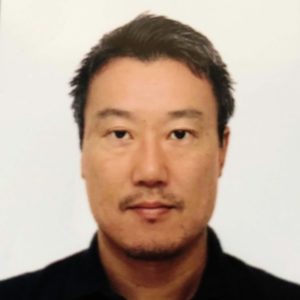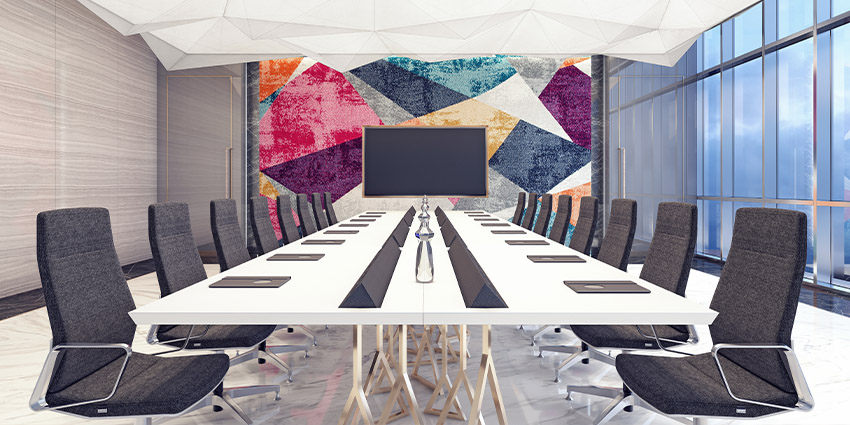Yamaha has been associated with entertainment audio for a very long time. There’s a solid reason for that: with 63 group companies worldwide, over 130 years of experience in building musical instruments and more than 50 years developing mixers, speakers and amplifiers, the company has been a global leader in the field of professional audio.
Some may still not know, however, that Yamaha has been in the UC market for quite a while now. The audio giant made its first step into Unified Communications in 2006, when it launched its first generation of UC products, and gradually expanded its reach from Japan to the rest of the globe. In 2017 the company opened a dedicated UC department and in 2018 it established Yamaha UC Inc. in the US. Just recently, in 2019, Yamaha started to offer Unified Communications products in Europe as well.
Nowadays, the company continues to establish its status in the global UC market, focusing its attention on what it does best: sound.
Experts in Sound
Yamaha’s USP, naturally, is its rich expertise in the audio department.
“Our first original product was speakerphones, and we are still producing speakerphones as a part of our portfolio,” says Ryusuke Nakao, Business Planning Manager at Yamaha.
Fun fact: Yamaha has been ranked 1st in the USB speakerphone market in Japan since 2007.

“Our core technology is DSP [Digital Sound Processing], which consists of various sound technologies such as adaptive echo cancellation and noise reduction. DSP technology improves audio quality, especially in remote communication contexts.”
“Maybe it’s good to think of it as an algorithm,” says Marcus-Michael Müller, Yamaha’s Head of Sales & Marketing Unified Communications Europe. “We develop special algorithms to filter the sound and make it better. We have a lot of experience and a large number of registered patents in this area.”
Yamaha didn’t settle for lab experience only – they made sure to get plenty of hands-on field experience to ensure the quality of their technology.
“To develop these algorithms, you need to have experience in the field, not just in the lab,” says Nakao. “For the first 5-10 years, our focus was on the Japanese market. We had most of our major corporate customers and partners in one small area in Tokyo, which gave us the ability to visit their conference rooms almost on a weekly basis. This way, our engineers were able to accumulate knowledge based on different acoustic environments and make our DSP more versatile and universal.”

One of Yamaha’s most recent developments in this field is its Soundcap technology.
Soundcap is a sound signal processing technology, meant to enable clear, noise-free remote communication in open workspaces.
“Soundcap is a mixture of many different kinds of algorithms,” says Müller. “We have something called ‘human voice auto detection,’ that automatically detects if a certain sound is a voice or noise, for example, and other special algorithms. The better these algorithms are – the better the sound capturing quality is. It’s also important to playback the sound clearly, and our technology does that, too. We take care of both input and output.”
Yamaha is in fact implementing its knowledge from entertainment audio and brings it into its UC products.
“These innovations originally came from the entertainment, professional audio side of things, and are now finding their way into UC,” explains Müller.
“We chose to focus our attention on the sound aspect of UC because we know that’s where we can make the most significant contribution.”
Right now, the Soundcap technology is only being used in Yamaha’s small portable USB & Bluetooth speakerphone, the YVC-330, but it is planned on being incorporated into more of their products in the upcoming future.
“At the moment, we think this technology best suits the YVC-330, because this device is designed for groups working in open spaces, where there’s a lot of noise,” says Nakao. “Our algorithm helps create a type of ‘bubble,’ so that most unnecessary noises are blocked.”
Something for Everyone
Yamaha’s breadth of UC sound solutions covers pretty much the entire range: from USB plug-and-play to high-end professional products; from home offices to large enterprises.
“On the one hand, we have simple plug-and-play products that can be used by everyone,” says Müller. “On the other hand, we have highly professional products that are used in large enterprises or in the education area. These products can only be set up with the help of experienced professionals.”
The company’s UC products can be divided into three main categories:
Speakerphones; video collaboration products (all-in-one sound bars including both audio and video); and microphone systems for conference rooms (wireless or ceiling).
“The YVC-330 that we just mentioned is a great example of a plug-and-play product that we make,” says Nakao. “It has a simple USB connection and is very easy to use. Another great example is the CS-700, our advanced video sound bar, which also provides optimal audio for conferencing situations.”
“On the high-end, professional side, we have our digital microphone systems: Elite and ADECIA,” says Müller. “Elite is our current flagship wireless microphone system, which can be used with up to 72 channels at the same time. ADECIA is our newest conferencing ceiling solution, coming up in Q1 of 2021. In the future we plan to expand ADECIA further.”
At the end of the day, Yamaha clearly believes that audio is the most critical aspect of communication, and they live by that philosophy. “To quote Marcus, it’s because ‘audio is a lifeline of communication’,” says Nakao. “We can communicate without video, but without audio, we’re lost.”







